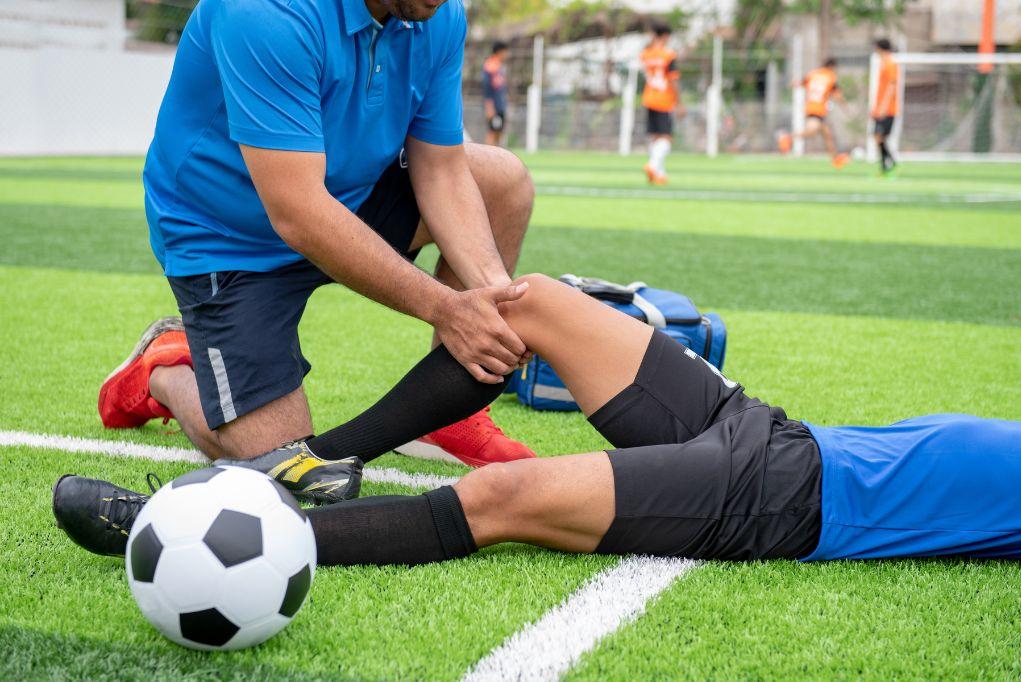The Athlete’s Guide to Meniscus Tears: Prevention, Diagnosis, and Recovery
If you’re an athlete, you know how frustrating it can be when an injury sidelines you from the game you love. Meniscus tears are one of those injuries that can keep you off the field, court, or track. Whether you’ve felt that sudden pain in your knee after a sharp turn or noticed a lingering ache after a long run, understanding how to prevent, diagnose, and recover from a meniscus tear is crucial. Let’s dive into what you need to know to keep your knees healthy and get back to your sport as quickly as possible.

What is a Meniscus Tear?
The meniscus is a C-shaped piece of cartilage located in the knee joint. It acts as a cushion between the thighbone (femur) and the shinbone (tibia), providing stability and absorbing shock during physical activities. Each knee has two menisci: the medial meniscus on the inside and the lateral meniscus on the outside. A meniscus tear occurs when this cartilage is damaged due to excessive force or sudden twisting movements, which are common in sports.
Causes of Meniscus Tears in Athletes
High-impact Sports
Sports that involve sudden stops, starts, and changes in direction, such as football, basketball, soccer, and tennis, place significant stress on the knee joint. These activities can lead to acute meniscus tears. For instance, a sudden pivot or twist with the foot planted can cause the meniscus to tear. Additionally, direct contact, such as a tackle in football, can result in a tear.
Repetitive Stress
Endurance sports like running, cycling, and rowing can cause gradual wear and tear on the meniscus over time. Repeated stress can weaken the cartilage, making it more susceptible to injury. Long-distance runners, for example, might experience degenerative meniscus tears due to the continuous impact on their knees. This type of tear can also develop in athletes who engage in repetitive squatting or lifting.
Improper Training and Technique
Using incorrect form during exercises and sports activities can increase the risk of a meniscus tear. This includes inadequate warm-ups, poor biomechanics, and overtraining without sufficient rest. For example, lifting heavy weights without proper knee alignment can strain the meniscus.
Athletes who do not take time to rest between intense training sessions may also find themselves at a higher risk of injury due to muscle fatigue and decreased joint stability.
Recognizing the Symptoms of a Meniscus Tear
Identifying a meniscus tear early is crucial for effective treatment and recovery. Common symptoms include:
- Pain and Swelling: Pain in the knee, especially when twisting or rotating it. Swelling often occurs within the first 24 hours after the injury.
- A Popping Sensation: Many people report feeling or hearing a pop at the time of injury, which can be indicative of a tear.
- Difficulty Bending and Straightening the Knee: The knee may feel locked or catch during movement, making it hard to fully extend or flex the leg.
- Knee Instability: Feeling like the knee is giving way or unable to support weight can indicate a meniscus tear.
- Reduced Range of Motion and Stability: Limited ability to move the knee through its full range of motion without pain or discomfort.
Diagnosing Meniscus Tears
Accurate diagnosis is essential for determining the severity of a meniscus tear and the appropriate treatment plan. At Motion Orthopaedics, our diagnostic process includes:
Physical Examination
A thorough examination of the knee joint, assessing pain, swelling, range of motion, and stability. The doctor will perform specific maneuvers, such as the McMurray test, to pinpoint the location and nature of the tear. This test involves bending, straightening, and rotating the knee to see if it causes pain or a clicking sound.
Imaging Tests
Advanced imaging techniques such as MRI (Magnetic Resonance Imaging) and X-rays provide detailed views of the knee’s internal structures, confirming the presence and extent of the tear. While X-rays can rule out fractures, an MRI is particularly useful for visualizing soft tissue injuries, including meniscus tears, ligament damage, and cartilage conditions.
Treatment Options for Meniscus Tears
Non-surgical Treatments
For minor tears or degenerative meniscus tears, non-surgical treatments can be effective. These include:
- Rest and Ice: Reducing activity and applying ice packs to minimize swelling and pain. Elevating the leg can also help reduce swelling.
- Physical Therapy: A tailored exercise program to strengthen the surrounding muscles and improve knee stability. Therapists may use techniques such as electrical stimulation, ultrasound, and manual therapy to aid recovery.
- Anti-inflammatory Medications: Over-the-counter or prescribed medications to manage pain and inflammation. Non-steroidal anti-inflammatory drugs (NSAIDs) like ibuprofen can be helpful in reducing pain and swelling.
Surgical Treatments
Severe meniscus tears or those that do not respond to conservative treatments may require surgery. Options include:
- Arthroscopic Surgery: A minimally invasive procedure where small instruments and a camera are used to repair or remove the damaged meniscus. This type of surgery typically results in less pain and faster recovery times compared to open surgery.
- Meniscectomy: Partial or complete removal of the torn meniscus if repair is not feasible. This procedure is often performed when the tear is located in the avascular zone of the meniscus, where blood supply is poor and healing potential is low.
- Meniscus Repair: Suturing the torn edges together to promote natural healing. This is usually done for tears located in the vascular zone, where blood supply is adequate to support healing.
The Road to Recovery
Recovery from a meniscus tear varies based on the severity of the injury and the chosen treatment. Key components of a successful recovery include:
- Rehabilitation: A structured physical therapy program to restore strength, flexibility, and range of motion. Rehabilitation often begins with gentle range-of-motion exercises and progresses to strengthening and functional training.
- Gradual Return to Activity: Slowly reintroducing sports and activities, following the guidance of your healthcare provider to avoid re-injury. Athletes should gradually increase their activity levels and avoid high-impact exercises until fully healed.
- Ongoing Maintenance: Regular exercises to maintain knee health and prevent future injuries. This includes activities like cycling, swimming, and strength training that promote joint stability and flexibility.
Prevention Tips for Athletes
Preventing meniscus tears involves a combination of proper training, conditioning, and awareness:
- Warm-up and Cool-down: Always include dynamic stretches and light exercises before and after workouts. Warming up increases blood flow to the muscles and prepares the body for physical activity.
- Strength Training: Focus on building the muscles around the knee, including the quadriceps, hamstrings, and calf muscles. Strong muscles provide better support and stability for the knee joint.
- Proper Technique: Use correct form and techniques during sports and exercises to minimize stress on the knee joint. Consider working with a coach or trainer to ensure proper biomechanics.
- Listen to Your Body: Pay attention to pain and discomfort, allowing time for rest and recovery to prevent overuse injuries. Avoid pushing through pain and seek medical advice if symptoms persist.
Don’t Ignore the Signs: Seek Expert Care
Ignoring the symptoms of a meniscus tear can lead to more severe damage and prolonged recovery times. At Motion Orthopaedics, our team of experts is dedicated to providing comprehensive care for athletes of all levels. If you suspect a meniscus tear or are experiencing knee pain, contact us today to schedule a consultation and get back on track toward a pain-free, active lifestyle.




